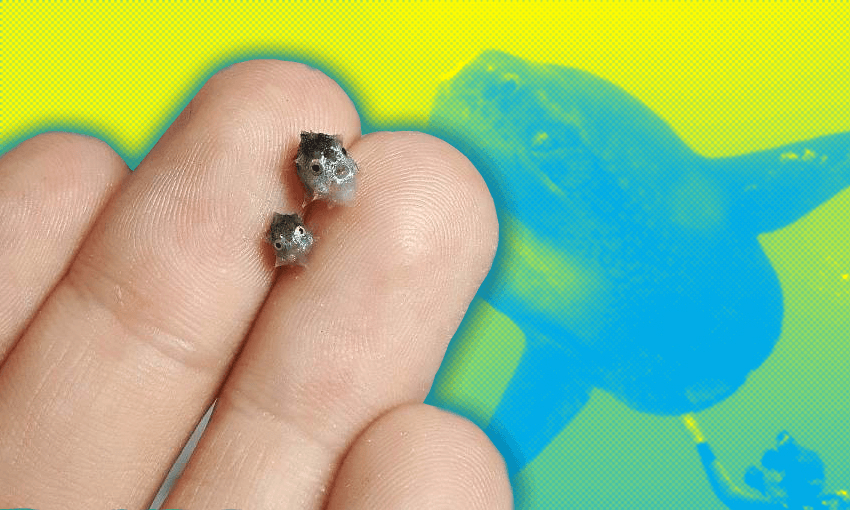Less than 2mm when they hatch, sunfish grow to become the largest bony fish in the world. Little is known about them in their early stages, but one Auckland-based scientist has helped make a major genetic breakthrough in sunfish research for the first time.
As far as fish go, sunfish are pretty funny-looking creatures. They have small mouths with giant bodies with no discernible tail (instead they have a “clavus”, which in latin means “rudder”). They can grow to more than three metres long, four metres tall and weigh over 2,000kg, which is roughly equivalent to a large hippo.
But they don’t start out like that. In fact, these giant ocean-dwelling beasts actually start out as tiny baby larvae – small enough to fit not just on the palm of your hand, but on the tip of your finger.
“They’re adorable and they’re so small! They’re like little Pokémon,” says Auckland Museum sunfish expert Dr Marianne Nyegaard. “When they first hatch they’re actually smaller than 2mm, so they’re minute. Then they grow up to become these enormous fish so they have the biggest growth increase of any animal. They increase in weight 600 million times.”
Not much is known about sunfish in these early stages as larvae are hard to come by, but in a world first, scientists in New Zealand and Australia have managed to genetically identify the tiny larva of the bump-head sunfish (mola alexandrini), the most common sunfish species found in Southern Hemisphere waters.
“The mola larvae are a bit of an enigma,” says Nyegaard, who led the research in collaboration with Australian Museum scientists Kerryn Parkinson and Andrew King. “No one has done any work to distinguish the different species of sunfish larvae so when we see one we can see it’s a sunfish but we can’t tell which species it is.”
To do this research, Nyegaard needed fresh sunfish larvae rather than larvae fixed in formalin for museum purposes. Luckily, in 2017, a friend of Nyegaard’s managed to procure some while onboard an investigative ship near New South Wales, which she suspects may be a site where these giant fish spawn. From there, genetic work was done and the larvae were identified as bump-head sunfish. “Now we can compare that with other mola larvae and pinpoint some differences [between the species],” she says.
Eventually, this new research will enable scientists to find out where and when these larvae can be found, which Nyegaard says will be a huge step forward in understanding sunfish life cycles. “At the moment we only see the adults and it’s like ‘where do they come from?’”
Nyegaard hopes this new scientific breakthrough will spur renewed interest in sunfish as little research exists compared to other marine fauna. She says that while captive sunfish are known to grow extremely fast, going from tiny creatures to three metre long beasts in just 20 years, little is known about their growth in the wild, which she suspects is much slower.
“In nature, they eat jellyfish and things that aren’t particularly nutritious, and they dive several hundred metres for their food before coming back up again to warm up … They have to work really hard for their food”.
Recently, a micro CT scan was made of the larvae – which is currently being kept at Auckland Museum – to create a 3D model to allow researchers to study its shape and form without the need for a microscope. This also allows scientists to look at its internal structure which has never been done with any of the mola species before, according to Nyegaard.
“It’s becoming more fun and popular for museums to micro CT scan specimens because you get a virtual model that you can fool around with and look at from all angles,” she says. “I’m hoping Auckland Museum will at some stage display one of these 3D models so that people can see them because they’re so tiny and adorable.”
“When you look at most large things in the world, they’re born quite large as well. So sunfish are a real outlier in that they’re huge – they’re a mega fauna – but they’re tiny when they’re born. There really aren’t any other lifeforms like it … The larvae definitely deliver ‘wow’ factor!”

